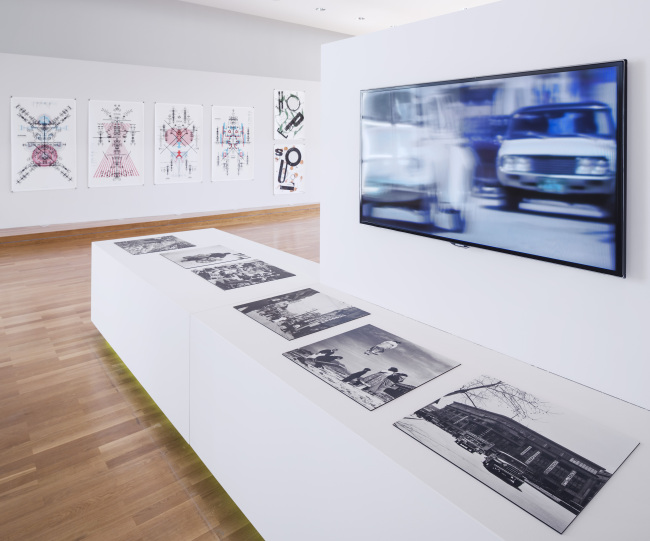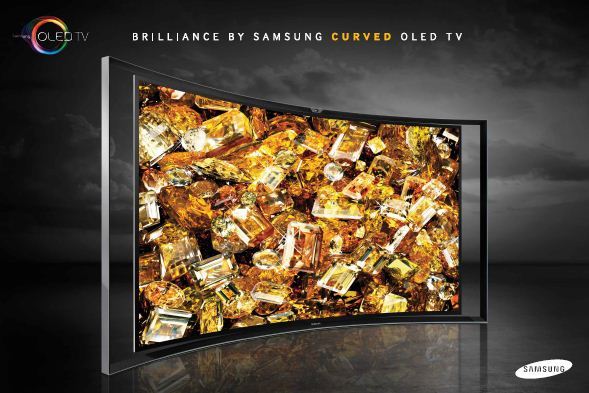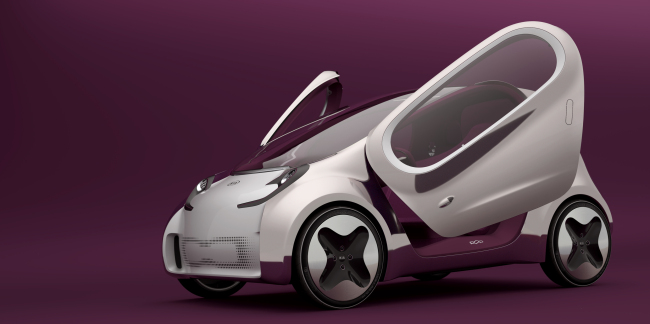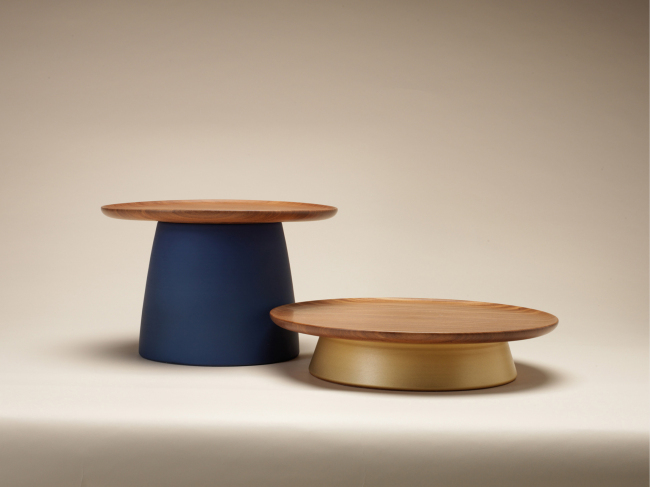From copycat to innovator: Korea creates design identity
By Lee Woo-youngPublished : Aug. 15, 2013 - 21:14
This is the first in an eight-part series that examines the social role of design beyond its aesthetic aspect. The weekly series is a precursor to Herald Design Week 2013, Oct. 7-11, which will be organized under the theme of “Re-imagine the World.” ― Ed.
Korea is today one of the leading industrial nations with cutting-edge technologies and dynamic design. However, it has not been long that design emerged as a major factor in the manufacturing and lifestyle of Koreans.
 Considering the country has risen from the ashes of the Korean War, the technologies and design it has developed in just 50 years are remarkable.
Considering the country has risen from the ashes of the Korean War, the technologies and design it has developed in just 50 years are remarkable.
“The turbulent history of the country displays a highly diverse and successful development. But it is not so much design but other factors which contributed to the ‘miracle on the Han River.’ These factors are above all mental qualities like discipline, flexibility, willingness to learn and a high commitment combined with a very positive attitude to life,” said Ahn Hehn-Chu, junior curator of The Museum of Applied Art in Frankfurt, in an email interview with The Korea Herald. The museum is currently holding an extensive exhibition that focuses on contemporary Korean design titled “Korea Power: Design and Identity” until Aug. 25.

Korea is today one of the leading industrial nations with cutting-edge technologies and dynamic design. However, it has not been long that design emerged as a major factor in the manufacturing and lifestyle of Koreans.
 Considering the country has risen from the ashes of the Korean War, the technologies and design it has developed in just 50 years are remarkable.
Considering the country has risen from the ashes of the Korean War, the technologies and design it has developed in just 50 years are remarkable. “The turbulent history of the country displays a highly diverse and successful development. But it is not so much design but other factors which contributed to the ‘miracle on the Han River.’ These factors are above all mental qualities like discipline, flexibility, willingness to learn and a high commitment combined with a very positive attitude to life,” said Ahn Hehn-Chu, junior curator of The Museum of Applied Art in Frankfurt, in an email interview with The Korea Herald. The museum is currently holding an extensive exhibition that focuses on contemporary Korean design titled “Korea Power: Design and Identity” until Aug. 25.


Shim Jae-jin, former chief director of LG’s design research center is a witness to the development of design in Korea.
“Korean design is bold and has power. That’s what attracts consumers of today to buying Korean products,” said Shim in a phone interview with The Korea Herald.
“But it hasn’t been long since the Korean design started to combine boldness and sophistication. It started to be recognized starting in 2009.”
Korea had been stuck with the label of design copycat as most of the electronics and consumer goods were copied or imitated products from the U.S. and Japan.
“It was 100 percent copied in the beginning,” said Shim, who worked in LG for 29 years as a designer.
The radio Shim designed in 1979, which was also his first product design, featured some design qualities from similar radios designed in the U.S. and Japan. “It sold quite well until the early 90s. It even won the long cycle award in Singapore,” Shim said.
Twenty-four years later, his design team released the LCD monitor “Eagle Eye” series in 2003 as their first wholly self- developed product design.
He explained that the 1970s was a period when design wasn’t even a consideration in producing consumer goods. Then companies started to imitate the U.S. and Japanese products in the ’80s and ’90s. Based on some design ideas gleaned from foreign products, Koreans began to add their own creativity while still following the best examples of foreign products in the mid-1990s. In the late 1990s, Koreans began to stress the importance of design: A government campaign from the period reads “design makes a country rich and powerful.” The word “innovation” was emphasized in practically all industries.
Through the process of awakening its own creativity, Korea started to be noticed in the global design world. In 2006, Korean designers won numerous global design awards such as the Red Dot Award and The International Design Excellence Awards (IDEA), according to Shim.
During the past 50 years, economic development and design evolution have been taking place concurrently, especially in the electronics and automobile industries.

Samsung and LG are now the leaders in the world television market with their 27.9 percent and 16.5 percent market shares, respectively, in the first quarter of this year, according to the market research firm DisplaySearch.
The exhibition on Korean design in Germany explores contemporary Korean design, which is still mostly unknown in the West.
“Many exhibitions about Korea abroad deal with the last 5,000 years and give an overview of Korean art. However, most visitors have an image of South Korea which is mostly affected by the product world of Samsung, LG, Hyundai, etc,” said Ahn.
“Many visitors are surprised to learn the modern side of South Korea and in general, the exhibition seems to help learn more about Korean everyday life and the country’s product world.”
“Korea Power” exhibition offers a look at the everyday modern life of Koreans with an assortment of functional furniture, tableware and fashion design that combines the traditional aesthetics of Korea as shown in the set of small tables called “soban.”
It also reveals dynamic and diverse aspects of the country with scenes of Jongno district as an example ― an area where traditional old hanok houses, modern buildings from the Japanese colonial era and shining skyscrapers are all clustered together.
“You can see what Korean design offers: In comparison to China, it shows a lack of pretension; and in contrast to Japan it tends to be more vital. It is also great to see that there has been a revival of interest in old Korean traditions like hanok houses and classical furniture, and the traditional way of life is currently experiencing a true renaissance in Korea,” Ahn explained.
The exhibition also features some innovative designs such as the futuristic concept car designed by the chief design officer of Kia Motors Corporation and Hyundai Motor Group.


For better understanding of the culture behind the designs, the exhibition also features films and photographs from the 1940s to the present, highlighting dramatic changes in the life of Koreans, taken by photographer Kim Han-yong.
Another photo series by Dieter Leistner presents interesting and contrasting portraits of the divided country. Leistner brings together similar scenes from the two Koreas taken during his visits to Pyongyang and Seoul in 2006 and 2012, respectively.
With Korean design appearing to be in its heyday, experts note that Korea stands at a critical juncture in setting future design strategies.
“Everyone knows South Korean technology is good. But I don’t see any products that have originality in design,” Shim said.
Shim explained that the design teams in large corporations have become too big, making effective communication hard to achieve.
“Korea is in the beginning stage of establishing its identity in design. When people start to go for safe options rather than take risks, that’s when design loses its power,” Shim said.
Klaus Klemp, head of exhibition of The Museum of Applied Art in Frankfurt, also stressed design made through free and democratic communication.
“Korean companies tend to have too large design departments with hundreds of employees instead of an efficient small design team,” Klemp said in an email interview with The Korea Herald.
Klemp explained how the key to Apple’s design success is the company’s compact design team, which consists of less than 20 people, and its direct connection to management, which they picked up from the German consumer electronics company Braun.
He further stressed that with the shortage of resources affecting all nations, sustainable design is a necessity and that communication is key to developing design that is both aesthetically appealing and sustainable so that people can use the product for a long time.
“It is profitable for companies because good and smart products will find more consumers, not only in Korea, but worldwide,” he said.
By Lee Woo-young (wylee@heraldcorp.com)








![[KH Explains] Hyundai's full hybrid edge to pay off amid slow transition to pure EVs](http://res.heraldm.com/phpwas/restmb_idxmake.php?idx=644&simg=/content/image/2024/04/18/20240418050645_0.jpg&u=20240419100350)






![[From the Scene] Monks, Buddhists hail return of remains of Buddhas](http://res.heraldm.com/phpwas/restmb_idxmake.php?idx=652&simg=/content/image/2024/04/19/20240419050617_0.jpg&u=20240419175937)

![[KH Explains] Hyundai's full hybrid edge to pay off amid slow transition to pure EVs](http://res.heraldm.com/phpwas/restmb_idxmake.php?idx=652&simg=/content/image/2024/04/18/20240418050645_0.jpg&u=20240419100350)

![[Today’s K-pop] Illit drops debut single remix](http://res.heraldm.com/phpwas/restmb_idxmake.php?idx=642&simg=/content/image/2024/04/19/20240419050612_0.jpg&u=)